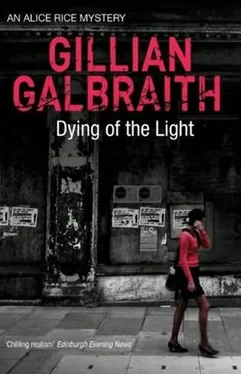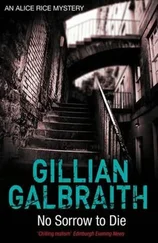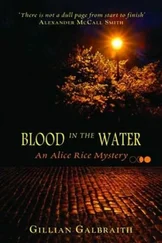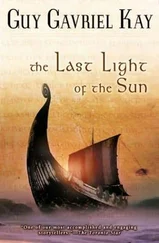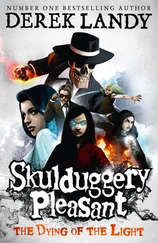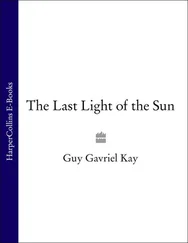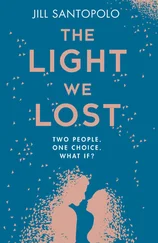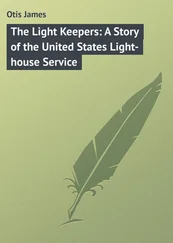She rubbed her eyes, aching from lack of sleep. She had spent the early hours agonising over the woman and her concerns, frightening herself with visions of the priest swinging from some makeshift noose or blood-spattered, his wrists sliced to ribbons. After all, his ingenuity was not in doubt, and nor, it would appear, was his determination. So, long before the alarm went off, she had given up the losing battle and crept out of bed, dressing hurriedly in the dark, lingering only to brush her lover’s temples with her lips.
The icy silence of the tenement was broken by the sound of her footsteps on the stone stair, echoing in the lonely space as she took the steps two at a time with only her shadow to accompany her descent. Frost had silvered the cobbles on Broughton Place, shafts of white light catching them each time the clouds raced past, revealing the face of the moon.

Overtaking a solitary old man, busy muttering to himself and tugging an aged spaniel behind him, the dog’s barrel-chest rolling from side to side as it made its bandy-legged way along the pavement, she attempted to focus on the case, hoping that the intense cold would help clear her head and sharpen her thoughts, rather than paralyse her brain.
All the evidence relating to the man must be reconsidered and she must reach her own conclusions. But, thinking about it, other than the forensic stuff there was nothing. Among the hundreds of witnesses questioned, not a single soul had identified him or spoken of his presence in the prostitutes’ territory. Of course, he had denied any involvement in either of the killings, and June Sharp had provided him with an alibi of sorts for the first one. And while he was out of circulation, twiddling his thumbs in Saughton, someone else had attacked another prostitute, and with a knife, the killer’s favoured weapon. Obviously, the city’s unofficial red-light district attracted a disproportionate number of its less well-intentioned citizens, creeps, perverts and pimps, but the selection of the same type of victim and the use of the same sort of weapon seemed an unlikely coincidence.

Her hair already flying about her face, unruly strands lashing her eyes and making her blink rapidly, Alice walked along North Bridge, finding herself hit by cross-winds that blew, dust-laden, from the east, their eddies making the cigarette-ends and sweet-papers in the gutter waltz. Turning her collar up, she tried to concentrate, but found that she could not, a raw ache in her ears distracting her until she clamped her hands over them, trying to stop the pain.
Start from first principles, she told herself, consider everything anew and think the unthinkable. On each occasion on which the priest’s DNA had been found, it had come from blood that also contained some of Simon’s too. Suppose McPhail’s DNA had come, not from a mixture of two bloods but instead from a single sample containing the two types of DNA. Simon had told her that he had received multiple blood transfusions and Mrs Donnelly had said that the priest was a blood donor. Suppose Simon Oakley’s blood contained Francis McPhail’s DNA? It seemed a long shot, to put it mildly, but with nothing else left she would have to check it out. Another unpleasant vision of the man in his prison appeared, unbidden, before her eyes. A figure weeping and in despair, railing against the world and its works, a piece of broken glass hidden in his hand. And it would be her sodding fault this time.
Creeping past Elaine Bell’s closed door she noticed light spilling under it. She had taken up residence there, pushing herself to the limit and reducing the compass of her life to the confines of the station. A sheet of lined A4, with ‘Do Disturb’ written on it in biro, had been attached to the door handle, as if in supplication. And it was hardly surprising that her temper, never fully in check, now ran wild and free, or that the targets of her irritation were becoming increasingly arbitrary. The squad tiptoed around her like well-intentioned Brownies humouring a cantankerous Brown Owl, desperate to avoid her attention. And while there were badges for following her instructions to the letter there were none for pursuing idiosyncratic, unauthorised lines.

As expected, the murder suite was empty, and Alice flopped down in front of her computer, beginning to tap its keys before she had even removed her coat or scarf. Typing in ‘Blood donor and alien DNA’ produced a number of possible entries. The first suggested that processed donated blood would be unlikely to yield any of the donor’s DNA, as very few of the donors’ white blood cells would remain in it post-transfusion, and only white blood cells contained nuclei from which the DNA could be extracted. Neither red blood cells nor platelets, the other constituent parts of blood, had nuclei. Any white blood cells remaining in the blood, after processing, would be destroyed either by the standard storage temperature used or, post-transfusion, by the recipient’s immune system.
The next hit initially gave her some hope, suggesting that if the recipient of donated blood left their blood at a crime-scene or wherever, it would contain ‘mixed’ DNA. However, the information was so poorly written and disorganised that any reliance on it seemed foolish. The last but one link led to a paragraph contributed by the National DNA Database of Canada, and it showed a markedly more sophisticated approach. It distinguished between types of fluid transfused, contrasting whole blood, containing red blood cells, platelets and white blood cells, and other fluids which included some but not all of the mix. The author of the article asserted that if the donee received either white blood cells or platelets, or both, then the mixed blood would reveal, on analysis, two separate types of DNA, one attributable to the donor and the other to the donee. It also expressly stated that not only white blood cells, but also platelets, contained DNA. The final piece Alice looked at referred to two studies, one involving a woman who had received fourteen units of blood (four whole blood, ten red blood cells only) and a man transfused with thirteen units (four whole, nine red blood cells only). In both cases, neither individual had detectable levels of the donor DNA profile when tested the day after the transfusions.

As Alice was leaning back on her chair, lost in thought, and still staring at her screen, trying to reconcile the partially contradictory information, Elaine Bell swooped into the murder suite in search of her wandering coffee mug. Spotting it from afar on her sergeant’s desk, she had crossed the room before her colleague had even become aware of her presence. And the gasp Alice released on seeing the DCI betrayed her guilty secret. For a second, she wondered whether her adversary, the cleaner, had planted the mug on her desk from mischievous motives, before recognising the notion for what it was, the product of paranoia and sleeplessness. As Elaine Bell snatched the mug, hissing like a snake about to strike, Alice hurriedly returned to the Google page, hoping that the DCI, still preoccupied with her mug, might not have noticed her unusual research.
‘What on earth are you wasting your time on now, Sergeant? Our time, more accurately, when there are countless things which still need to be done!’ the Chief Inspector thundered.
Читать дальше
